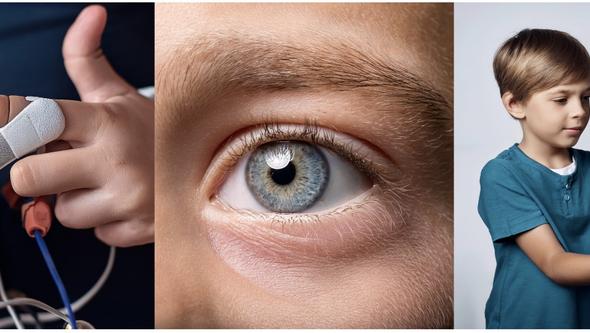
- Home
- News and events
- Find news
- Study reveals a link between autism traits in children and pupil size contagion
Study reveals a link between autism traits in children and pupil size contagion
New study just published on autism traits and pupil size contagion.

An ongoing debate in autism research focuses on eye contact in children and young adolescents who are diagnosed with autism. One idea claims that the decrease in eye contact that we see in children with autism might have to do with their general disinterest in other people. This idea, however, has been challenged in more recent years through research suggesting an increase in reactivity to this type of stimuli. In addition, adults with autism also have expressed that the lack of eye contact is because direct eye contact with others is overly stimulating. Combined, these findings seem to suggest that socio-affective stimuli, particularly direct eye contact, may be highly stimulating for autistic individuals, including those with high Autism Quotient (AQ) scores and the reduced eye contact in those with autism may be a coping mechanism for this hyperactivity.
A group of researchers at the Gillberg Neuropsychiatry Centre, University of Gothenburg have discovered a significant connection between pupillary contagion—the unconscious adaptation of one's pupil size to that of an observed individual—and the degree of autistic traits in both children and adolescents.
The study, led by researcher Martyna Galazka, senior lecturer in Cognitive Science, investigated how 66 (30 girls) children and adolescents aged 6-18 years, responded to images of faces with either small or large pupils. Of the 66 children included in the study, 22 (9 girls) had a clinical diagnosis or were awaiting an evaluation. Of these 22 participants, 19 had a primary diagnosis of autism, 2 general anxiety disorder and 1 ADHD.
One of the studies main aims was to discern whether pupillary contagion reflects an autonomic nervous system reaction by measuring changes in pupil size, heart rate, and skin conductance.
The study concluded that when the study participants focused on the eye region of the presented images:
- Both pupil size and heart rate changes were observed, indicating a connection between pupillary contagion and internal arousal.
- However, no significant change in skin conductance was detected.
- A positive association was found between the degree of autistic traits and pupillary contagion when the participants' gaze was restricted to the eye region.
"This study is important because gives us a fresh look at how people with autism might react to eye contact - not because they’re uninterested, but because it can be overwhelming. The link between the nervous system and its signatures like pupils, sweating and heart rate, can help us understand just how sensitive some individuals can be to things that others might not even notice. It’s a reminder that there's a lot going on under the surface that we’re still learning about," says Martyna Galakza.

Although the participant group in the present study is relatively small, the study does provide new insights into the mechanisms behind pupillary contagion and its potential association with autism, underscoring the significance of eye region focus in understanding autonomic responses in individuals with varying autistic traits.
To read more about this study:
Galazka, M. A., Thorsson, M., Lundin Kleberg, J., Hadjikhani, N., & Åsberg Johnels, J. (2024). Pupil contagion variation with gaze, arousal, and autistic traits. Scientific reports, 14(1), 18282. https://doi.org/10.1038/s41598-024-68670-7